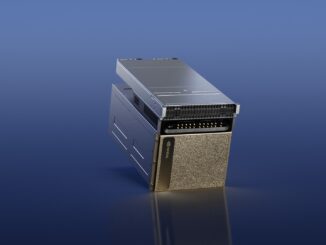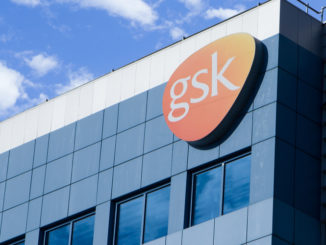
In the current quantum computing landscape, there are hardware and software providers with the most prominent players doing both. While the shakeout on which of these companies will become the prominent won’t even begin for a few years yet, there are some companies that have some significant advantages across the quantum spectrum. By spectrum, we mean the wide-ranging applications of quantum technology, from global positioning and navigation all the way to solving complex, scalable optimization problems.
The first in this category is Honeywell, which has the advantage of owning the supply chain of technology assets (from refrigeration units to control logic) to produce quantum systems from other businesses. We talked about this in depth here but there’s another company that might have an even broader quantum edge—one that is sharp not just on potential computing devices, but across the widening array of quantum applications in positioning, computing, and beyond. These tangential areas to quantum computing have significant appeal to defense and government agencies where federal funding has been pushed to develop these technologies.
The second company in this category is likely less familiar but we expect to hear much about Cold Quanta over the next several years. While they don’t own the cooling and complex supply chains Honeywell already has in-house, they have something that might be more important down the line: an established quantum technology that can be widely applicable across the quantum spaces: from positioning and telemetry systems all the way to quantum computers. While the latter won’t appear until later this year, the body of work and core technology gives Cold Quanta vast reach and a deep patent portfolio to own a big share of government quantum work at the edge device level up to large systems.
The company’s IP is based on cold or neutral atoms. At its simplest, this work, which comprised a Nobel Prize in 2000, is based on using lasers to slow or stop atomic motion, creating “cold atoms” that can be manipulated into quantum matter. Quantum matter itself is not a new concept but while scientists understood it existed, there wasn’t a good sense of what it could be used for until about twenty years ago where a team at the University of Colorado started to get an inkling. That team, led by Dana Anderson, spun some of this work into Cold Quanta with the original vision that they could provide labs with the machines needed to experiment with cold matter. They had a niche business based on R&D contracts for this purpose before getting the sense that what they had could be much bigger than just lab test equipment.
The multi-purpose quantum capabilities Cold Quanta can now meet are all based on what looks like a simple glass cell. This is at the core of everything that company does. Each of these glass cells is first evacuated and filled with atoms of a single element (for quantum computing it’s cesium). Lasers are used to stop the motion of the contained atoms, which makes them cold and allows them to take on quantum properties. Other lasers are then used to arrange other atoms and depending on how these are arranged they can create different effects. These atoms are aligned into a checkboard-type arrangement and each atom becomes, in essence, a qubit. Another laser connects these together to perform logic and run the computation and read out results. At least this is the idea. Again, the company won’t bring a quantum computer based on this method until later this year. But still. Sounds a bit like magic—perhaps too simple, yes?
Here’s where things get a little more down to earth. Cold Quanta is doing just the kind of thing the DoD and other agencies are actively seeking around telemetry, navigation, atomic clocks, and more already, all with the same glass cell-based approach described above. They have, for instance been able to stack those “egg crates” of atoms on top of each other into a sort of sugar cube to create a portable, small volume atomic clock that can be instantly turned on in the event of GPS loss.
And in that same glass cell, if atoms are arranged in a kind of vector (a straight line that’s very sensitive to x,y, and z changes) it is possible to record changes in position. Or if the atoms are counter-rotating and sensitive to those changes, they can make a gyroscope in a clock. With these elements they can create an ultra-accurate quantum positioning system. These are like GPS now but without satellites so no spoofing, no possible attacks. As the company’s President and CEO, Bo Ewald (if you’ve been around the block you know him from SGI, D-Wave, Linux Networx, Cray Research, and way back, LANL) tells us, “our early specs are, when we put together the atomic clock/gyroscope and you take off from SFO and it’s controlling the destination, the plane can go on autopilot to JFK with a landing so precise it can be on the runway specified. With today’s technology, you might land in the Hudson River or something.”
This small glass cell (and all the IP that comes along) is the key to Cold Quanta’s potential to own a broad spectrum of quantum products, all of which in high demand from government and research labs around the world. This base and existing R&D contract foundation with the DoD and other agencies, could make the company’s quantum computing future more secure, especially as national labs invest more heavily in on-prem quantum hardware.
“We’re coming from a place where we’ve spent the last twelve years building the lab equipment, learning about cold atoms and how they can be deployed in systems,” Ewald says. “Our goal is to make a machine we can run applications on. If you look at quantum computers and the three hardware dimensions you need to have (number of qubits, connectivity between qubits, and qubit quality) that’s what we’re working toward.” Ewald says he believes Cold Quanta can win on the number of qubits and their scalability.
For now, one look at the company’s product sheet reveals what looks like specialized lab equipment without any real connection to functional global positioning systems or quantum computers. But don’t be fooled, Ewald says, this is all the same foundational technology that’s set to get Cold Quanta in big with government agencies in particular across the quantum product spectrum. And there are bigger things to come—very big, if all works according to plan and defense research funding.
On a grander scale, Ewald says a DARPA contract has Cold Quanta pegged to deliver a system with at least one thousand qubits in three years—a tall order considering machines in the 20-50 qubit range (with reasonable connectivity, coherence, performance, etc.) are the norm now. “The idea is we’ll have, by the end of 2023 into 2024, a system with thousands of qubits is where we are aimed. That will be more than 2-3X what today’s systems have. In terms of connectivity between qubits, we’ll start with having one qubit connected to its four nearest neighbors but we use lasers to connect, so we think by the end of those next few years we could have one qubit connected to 20-30 others,” Ewald projects.
“We’ve been building cold atom quantum devices for almost fifteen years. We have a lot of patents and practical know-how. We’re probably the only quantum company that has launched quantum devices into space via the Cold Atom Laboratory via JPL and its experiments for quantum matter in space, this operated 18 months on the ISS. NASA said, gee, that worked great, and said let’s step beyond that and create a quantum gravity sensor to put on the ISS. That was launched in December of last year and has been operating on the ISS since spring,” Ewald says, emphasizing the company’s established history and credibility in quantum. Perhaps not computing just yet, but time will tell.
We can talk about quantum advantage endlessly. Not that it’s easy to come by, but practical advantage for quantum market supremacy seems just as important at this early stage. As mentioned earlier, Honeywell has a supply chain advantage in quantum for now but Cold Quanta has its own practical advantage points with a validated, existing, glass cell laser-manipulation based technology that seems worth paying close attention to from here forward as we watch the quantum ecosystem ebb and flow.





Be the first to comment